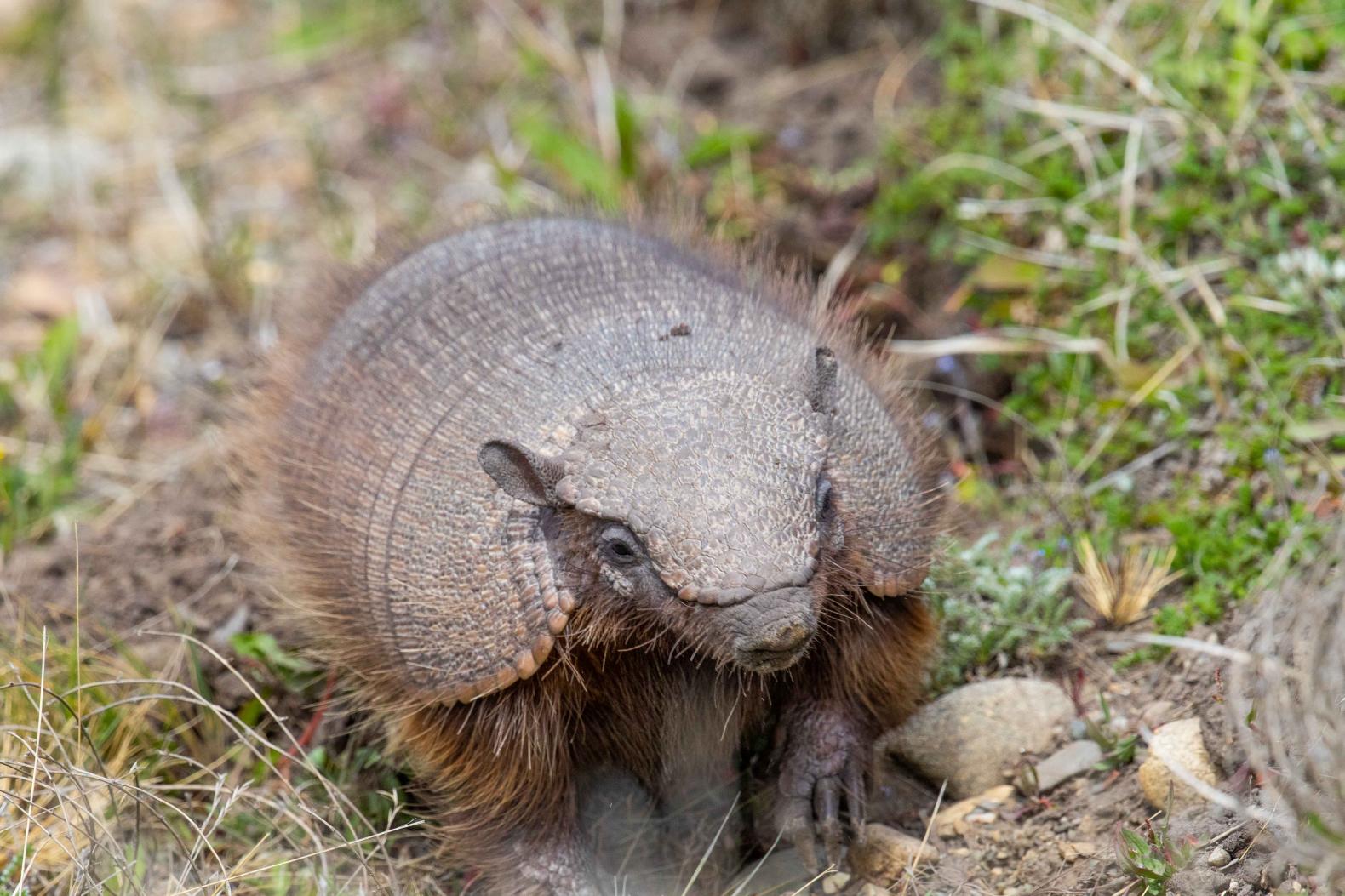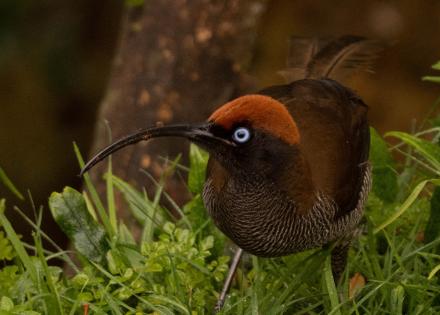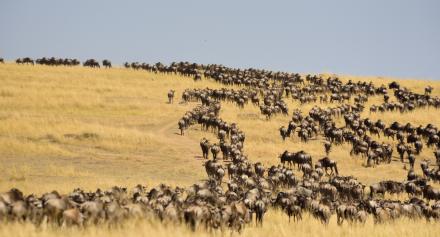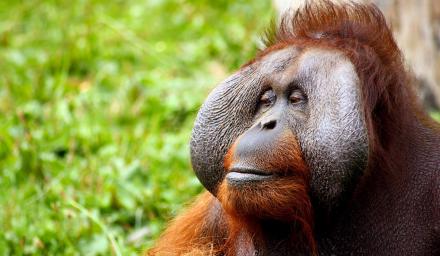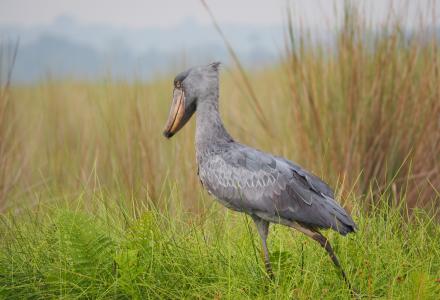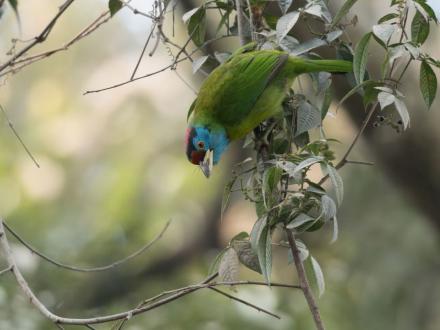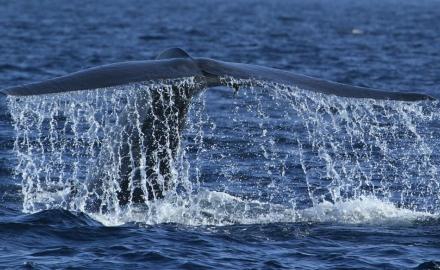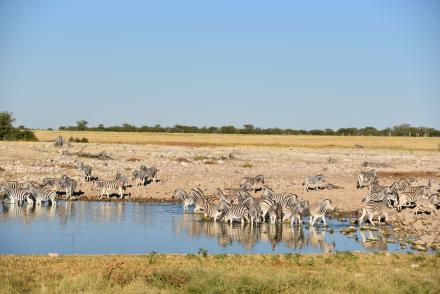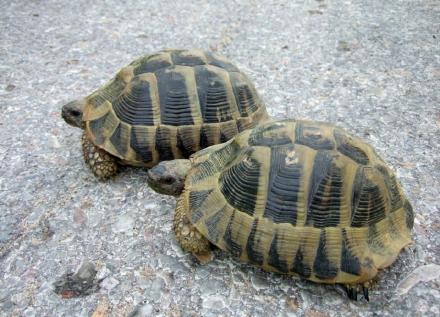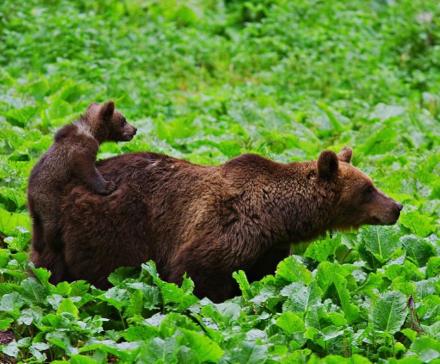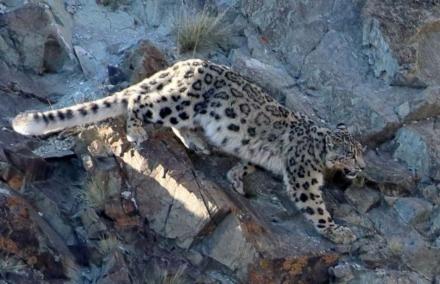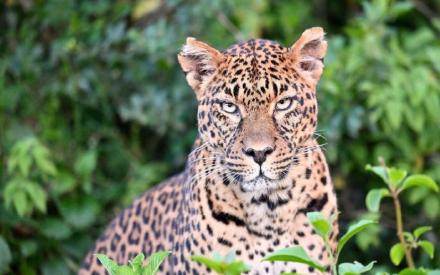Pre-tour Extension: 26 - 31 October 2024 (5.5 days) $3593 USD t/s; $360 USD s/s
Post-tour Extension: 15 - 21 November 2024 (6.5 days) $6550 USD t/s; $420 USD s/s
A guided tour in South America to find Gondwanan connections and evidence of the Theory of Continental Drift. Enjoy spectacular scenery, flora and wildlife.
South America was one of the last parts of the supercontinent Gondwanaland to break away from the Antarctic plate around 65 million years ago; Australia was the last (separating from the Antarctic plate around 45 million years ago). Consequently, the Australian fauna and flora are quite closely related to that of South America. This 16-day itinerary focuses on the central part of Chile and showcases these Gondwanan connections with particular reference to Tasmania and the southern cone of South America.
Northern Chile Lauca National Park pre-tour extension
Scenically breath-taking with stunning birdlife, the Andes conjure up a mouth-watering birding feast. Soaring Andean Condors above high peaks in clear blue skies and Diademed Sandpiper-Plovers on mineral-rich bogs with the sound of Seedsnipe echoing in the valley. These are the magical experiences of this trip. In just few days we shall visit, not only the high Puna grasslands but also the arid Pacific coast with its endemic species, the stunning Lauca National Park and look for the critically endangered hummingbird, the Chilean Woodstar. The plants are just as spectacular- those in the Atacama Desert contend with an annual rainfall of just 0.6mm of rain a year. Cacti and succulents abound and other plant specialties such as Calceolaria (slipper flower) and Tillandsia (air plants) are also found here.
Patagonia - Tierra del Fuego and Torres del Paine post-tour extension
Introduction: This extension takes us to one of the most impressive landscapes and mythical places in Chile in search of some of Chile’s most charismatic species. We will cross the famous Magellan straight into Tierra del Fuego, drive through the Patagonian steppe and look for the recently rediscovered Austral Rail at the base of the wonderful Torres Del Paine. Some stunning and sought-after species are found here, including King Penguin, Magellanic Plover, Ruddy-headed Goose, Chocolate-vented Tyrant, White-bridled Finch and so many more. Patagonia is also a destination for other wildlife, including the common Guanaco, Grey Fox, Peale's Dolphin, and with more luck the rare Puma or the rare Fin Whale. The weather is unpredictable here and it can be sunny, cold, very windy, rainy, snowy, and even warm – all in a single day!
Accommodation for each night of the tour, specialist guiding and transport for day and night tours as outlined in the itinerary, all meals (B, L, D) and activities outlined in the itinerary, and National Park entry fees.
Main Tour: flight from Puerto Montt to Santiago on day 15.
International and domestic airfares (return flight Arica-Santiago), alcoholic and non-alcoholic beverages and expenses of a personal nature (snacks, travel insurance, internet, laundry, tips etc).
Meals and drinks: Breakfast generally consists of a continental style breakfast with cereal, fruit and yoghurt and tea/coffee. Full cooked breakfast is not generally offered at most locations. Lunch will generally consist of a packed lunch style meal eaten in the field, with sandwich/filled roll, fruit, and a drink. Dinner usually consists of several options for main with the choice of either an appetiser or dessert. Drinks (soft and alcoholic) are generally not included but at lunches and breakfasts juice may be made available.
The itinerary: Whilst we aim to follow the itinerary as planned, please note that the itinerary provided should only be used as a guideline. Depending on individual trip circumstances, weather, and local information, the exact itinerary may not be strictly adhered to. The guides reserve the right to make changes to the itinerary as they see fit.
Download the itinerary brochure for the Chile South America - Gondwana Connections tour.
Download (pdf 2.98 MB)There are terms and conditions relating to payments, cancellations, refunds, insurance and responsibility for our tours.
Here's what you'll see and do on the Chile South America - Gondwana Connections tour.
Most international flights to Santiago, Chile arrive during the night. Today has been set aside as an arrival day to relax at your hotel or explore the local area. We will meet our local Chilean guide during the afternoon where we will discuss our itinerary.
Accommodation: Hotel near Santiago Airport (en suite rooms)
Meals included: D
This morning we will leave early fly from Santiago to the city of Arica which is next to the Peruvian border (flight not included in price but can be arranged if required). This northern extreme of Chile is known as the “Big North” and includes the vast Atacama Desert and the High Andean steppes of the Altiplano. Although located in the driest desert on earth, Arica has a good bird population, which is only possible because of rivers and small water courses which are fed by runoff from the High Andes allowing the existence of fertile valleys and well-cultivated flood plains that form rich oasis in this harsh environment.
Our most important target species will be hummingbirds (Trochilidae): Sturdy Oasis Hummingbird, Peruvian Sheartail and the critically endangered Chilean Woodstar (world’s population estimated at 350 individuals: The IUCN Red List of Threatened Species 2017) which occur in the Camarones Valley in southern Arica. Other unique bird species like Pied-crested Tit-Tytant, Tamarugo Conebill and a new species, Yellow-Finch, are also found here. After lunch we will explore the coastline at the estuary of one of the most important rivers in the region, Lluta River. The main target species here will be shorebirds, hopefully Killdeer, Snowy Plover, American and Blackish Oystercatchers, Surfbird, Willet and a beautiful species selection of Gulls and Terns.
Accommodation: Hotel in Arica (en suite rooms)
Meals included: B L D
This morning we will travel to the arable areas outside Arica and then to the town of Putre. Bird specialties we may see en route include the impressive Peruvian Thick-knee, Pacific Dove, Croaking Ground-Dove, Groove-Billed Ani, Burrowing Owl, Andean Swift, Peruvian Elaenia (the local form of White-Crested Elaenia), Vermilion Flycatcher, local race of Bran-Coloured Flycatcher (a strong candidate for a future split), Cinereous Conebill, Chestnut-Throated Seedeater, Blue-Black Grassquit, Slender-Billed Finch and Peruvian Meadowlark and much more. We will also see a range of endemic plants that grow in this area including two species of Tillandsia or ‘air plant’ (T. macronae and T. landbeckii) which manage to survive by obtaining water from the humid Pacific air. One plant which stands out in this arid environment is the impressive Browningia candelaris, which can reach a height of 5 metres; the silhouettes of their wide-spread arms along the mountain crests is reminiscent of the Araucarias of the south.
As we approach Putre, the species diversity increases, and the vegetation cover approaches 70% with many shrubs up to 1m tall-amazing in this arid environment. Other species we hope to see today include Lupinus oreophilus, Calceolaria inamoena, verbenas (like V. gynobasis), two species of Mutisias (M. acuminate and M hamata, both of which have large, showy flowers, as well as a variety of cacti including Corryocactus brevistylus which grows up to 5m tall with huge yellow flowers, Oreocereus hempellianus and O. leucotrichus and Neowerdermannia chilensis. We will spend the night in the beautiful town of Putre (altitude of 3,500 metres or 11.483 ft), Putre is the gateway for tomorrow’s adventure to the high elevation Andean ecosystems.
Accommodation: Hotel in Putre (en suite rooms)
Meals included: B L D
Lauca National Park is a place of outstanding natural beauty located in the heart of the Altiplano of the region of Arica-Parinacota. It was declared part of the World Network of Biosphere Reserves (WNBR) in 1981. The towering snow-capped volcanoes of Pomerape and Parinacota soar to over 6.300 metres (11.811 ft) and they reflect perfectly in the deep blue water of Chungara and Cotacotani Lakes, both important attractions of the park. Chungara Lake one of the highest altitude lakes in the world. It delights visitors with its impressive landscape and its hordes of amazing and unique species of birds. Some of the species present in this habitat are; Andean Grebe (the local form of Silvery Grebe), Puna Teal and Giant Coot along with a variety of species of ducks and Andean Gulls. While driving up to the lakes we will search in the high-altitude bogs for the stunning and difficult to find Diademed Sandpiper Plover. Other target birds for this area are; Puna Rhea, Andean Flicker, White-Winged Cinclodes, Black Siskin, Puna Tinamou, Puna Ibis, Andean Goose, Mountain Caracara, Andean Lapwing, Puna Plover, Andean Avocet, Andean Gull, Puna Miner, Puna and White Fronted Ground-Tyrants, Andean Negrito, White-Winged Diuca-Finch and White-Throated Sierra-Finch.
We will also be looking for Flamingos, and with some luck we will be able to spot all three of its species: Chilean, Andean and Puna. We will return to Putre at the end of the day. At the end of an excellent and adventurous day we return to our lodge in Putre.
Accommodation: Hotel in Putre (en suite rooms) as for last night
Meals included: B L D
We will spend the morning around this Andean village looking for Bare-Faced Ground-Dove, White-Throated Earthcreeper, Yellow-Billed Tit Tyrant, Canyon and Dark-Winged Canastero, Blue-and-Yellow Tanager, Cream-Winged and White-Winged Cinclodes, Streaked Tit-Spinetail, D'Orbigny's and White-Browed Chat-Tyrants, Chiguanco Thrush, Black-Throated Flower-Piercer, Golden- Billed Saltator, Black-Hooded and Ash-Breasted Sierra-Finches along with Greenish Yellow-Finch, Band-tailed Seedeater and maybe Ornate Tinamou and Spot-winged Pigeon. We will then drive slowly down the winding mountain road back to Arica looking for any birds we may have missed on the way to Putre. We will then return to our hotel in Arica.
Accommodation: Hotel in Arica (en suite rooms)
Meals included: B L D
We will visit the Luta River estuary early this morning before our flight back to Santiago, to connect with the Main Tour (flight not included in price but can be arranged if required).
Accommodation: none (included in main tour)
Meals included: B L
We will arrive at Santiago, the capital of Chile, where we will be transferred to our hotel. At our welcome dinner this evening, our local South American guide will meet us to discuss and answer questions regarding the itinerary before beginning this fantastic trip.
Accommodation: Santiago (en suite)
Meals included: D
This park is located in the Coastal Range in the Valparaiso Region about 1.5 hours’ drive from Santiago. Because of its high rates of biodiversity and endemism it was declared a Biosphere Reserve by UNESCO (WNBR The World Network of Biosphere Reserves). La Campana has a very representative sample of the flora and fauna native to central Chile. One of the most attractive floral highlights in the park is the endemic and long-lived Chilean Palm (Jubaea chilensis). This extraordinary plant, with amazing adaptations is also famous because it can reach more than 1,000 years old. In the park, it will also be possible to observe the three main native vegetation types that occur in the central zone of the country; Matorral (a mix of short and spiny scrubs, bushes and cacti), Sclerophyllous forest (formed by different species of hard-leafed trees) and Savanah (large, extended plains covered with acacia).
In1834, the British naturalist Charles Darwin explored this valley, which was one of his important expeditions while traveling in Chile. Gondwanan flora we should see here include Drimys winteri (a sacred tree for Indigenous people), Alstroemeria ligtu, A. pulchra (which should be flowering at the time of our visit) and Crinodendron patagua. Endemic bird specialties here include Moustached Turca, White-throated Tapaculo, Chilean Tinamou, Dusky- tailed Canastero and Dusky Tapaculo. Other interesting central Chilean birds we should see here include Chilean Pigeon, Striped Woodpecker, Chilean Flicker, Austral Pygmy-owl, Giant Hummingbird, Plain-mantled Tit-spinetail, Tufted Tit-tyrant, White-crested Elaenia, Rufous-tailed Plantcutter and Common Diuca-finch. In this beautiful area, it also possible to observe some mammals including two native species of fox and diurnal endemic rodents (Family Octodontidae).
The variety of reptile species is also amazing, one of the most impressive being the endemic Chilean Iguana or Liguana (Callopistes maculatus). In the afternoon we will visit the Batuco Wetlands. These are the last sizeable wetlads left in central Chile and concentrate large congregations of waterfowl. The extensive reedbeds are also home to reed specialists like Many-coloured Rush-tyrant and Wren-like Rushbird.
Accommodation: Santiago (en suite) as for last night
Meals included: B L D
We will start early this morning to travel to Farellones, east of Santiago and in the heart of the Andes Range. This mountain town is an important sky centre close to the capital. During spring and summer, it is an excellent location to see native high-altitude flora and fauna. While driving along the road to Farellones we will look for high altitude specialists like Greater Yellow finch, Rufous-Banded, Creamy-Rumped Miners and White-Sided Hillstar among other special Andean birds. Massive Andean Condors should be above and sometimes below us. We are also hoping to see Variable Hawk, Black-Chested Buzzard Eagle and Mountain Caracara.
We will also be birding in lower altitudes, looking for 5 endemics: Chilean Tinamou, Moustached Turca, White-Throated and Dusky Tapaculos, Crag Chilia and Dusky-Tailed Canastero. We are also likely to spot some native rodents during this trip. This will be a great birding day with fantastic views of the scenery and spectacular landscapes. In the afternoon we will return to hotel.
Accommodation: Santiago (en suite as for last night)
Meals included: B L D
We will depart from Santiago in the morning and drive towards to the south to Talca, and then continue our trip to Colbún Lake. We are still in the Mediterranean Region and our main targets will be the large, spectacularly colourful and very noisy Burrowing Parakeet and beautiful Spectacled Duck. Hopefully we will also find a good number of other interesting ducks and grebe species and an opportunity to see Spectacled Tyrant and Andean Gull. We will then make a short trip to the north to spend the afternoon in a quiet and comfortable forest lodge in Vilches. At dusk, we will look for the hard to see Rufous-Legged Owl.
Accommodation: Vilches (en suite rooms)
Meals included: B L D
Located in the southern border of the Mediterranean Region, this park is in the ecotone (transition area between two biomes) between the Temperate Rain Forest and the Mediterranean Region of Chile. Usually an ecotone appears on the ground as a gradual blending of the two communities or ecosystems, so in this area we can see a transition of species of Nothofagus forest. While walking along trails participants will be amazed with the spectacular mature Nothofagus trees as well as ferns, mosses and forest bird species that are unique to the southern cone of South America.
On this northern border of the Temperate Rainforest plant species with Gondwanan connections gradually appear such as Lomatia hirsuta and Embothrium coccineum (both family Proteaceae), Austrocedrus chilensis (a southern Cypress) and Laurelia sempervirens (which is related to our Sassafras). We should also find a range of birds including Chile's least known Tapaculos and Chestnut-Throated Huet-Huet. Nothofagus forest specialties such as Austral Parakeet (the world's most southerly parrot species), Chucao Tapaculo with its explosive voice, Magellanic Tapaculo and the colourful Patagonian Sierra-Finch.
This will also be our first opportunity to see the truly spectacular Magellanic Woodpecker, and there also is a chance to spot rare and difficult to find Chilean and White-Throated Hawks. After a long day return to Vilches.
Accommodation: Vilches (en suite rooms as for last night)
Meals included: B L D
After breakfast, we will leave Vilches and head south. We will stop en route at scenically beautiful Laja Waterfalls where we will have lunch. These beautiful and huge waterfalls are formed by the Laja River, and the spray generated by the water is often tinged by a huge rainbow that crosses above it from side to side. The waterfalls are actually comprised of four spectacular falls of between 40 and 55 meters (130 and 180 ft.) in height. We will then continue to Conguillio National Park, our destination for the next two nights.
Accommodation: Conguillio (en suite rooms)
Meals included: B L D
Today we will explore Conguillío National Park located in the provinces of Cautín and Malleco, in the Araucanía Region of Chile in the higher altitudes of the Andes Mountains where forest of huge Nothofagus (Southern Beeches) and Araucaria (Monkey Puzzle Tree) forests grow. Its name is derived from the indigenous Mapudungún word for "water with Araucaria seeds". Among the attractions of the park are the Llaima and Sierra Nevada volcanoes which are responsible for modelling the landscape.
There are vast areas of lava flows characterized by islands of vegetation. Stunning lagoons and extensive forests formed mainly by Araucaria, and a high biodiversity of Nothofagus species increase the scenic beauty of the park. Conguillío is also one of the places where it is possible to find Gondwanan relics such as Podocarpus salignus, Prumnopitys andina and Gunnera tinctoria. Some of the special birds here are Torrent Duck, Patagonian Forest Earthcreeper, Magellanic Tapaculo, Austral Parakeet, Striped Woodpecker, Chilean Flicker, Magellanic Woodpecker, White-Throated Treerunner and other forest species. Mammals we may see today include Southern Red and Grey Fox restricted only to the area of the park.
Accommodation: Conguillio (en suite rooms)
Meals included: B L D
After breakfast we will leave Conguillío National Park and travel to the Huilo-Huilo Biological Reserve. After lunch we will explore the Nothofagus forest around our accommodation. The accommodation is amazing and quirky and the surrounding forest full of Gondwanan relicts like Drimys winteri, Laureliopsis philippiana, and massive Nothofagus trees.
Accommodation: Huilo Huilo (en suite rooms)
Meals included: B L D
Huilo Huilo Biological Reserve is located in the middle of the Chilean Patagonian Rainforest at the foot of the majestic Andes Mountain range. This unique project is committed to the conservation of nature and local culture. Looking for sustainability, the Huilo Huilo Foundation mission is to develop flora and fauna conservation projects and to involve the local community and local entrepreneurs in this work. One of the Foundation flagship projects is the conservation of the Huemul (Hippocamelus bisulcus), the southernmost deer species in the world. This animal is a national symbol, but in danger of extinction. This project has succeeded in preserving and breeding the Huemul in a controlled environment. In this beautiful and fairytale-like forest it is possible to find Lomatia hirsuta, Austrocedrus chilensis, Embothrium coccineum, Laurelia sempervirens which all have affinities with Australian flora. We will take a night walk tonight, to look for nocturnal mammals.
Accommodation: Huilo Huilo (en suite rooms as for last night)
Meals included: B L D
This morning we continue exploring in the Huilo Huilo Biological Reserve, including a visit to a fascinating museum with exhibitions on aspects of local indigenous groups, geology and
culture in southern Chile. Mid-morning, we will travel to Puyehue, stopping for lunch on-route.
Accommodation: Puyehue (en suite rooms)
Meals included: B L D
We will spend the day in the Puyehue National Park which is located in the Andes Mountain Range, in the Los Ríos and Los Lagos regions of Chile formerly referred to as the 10th region. The park boasts 220,000 acres of evergreen forests, surrounded by volcanoes and mountainous landscape with natural thermal springs. Puyehue National park forms part of the ‘Reserve of Temperate Rainy Forest Biospheres of the Southern Andes’. Forty animal species coexist in this place in which green colour rules. One of the most amazing and emblematic species that relate the South American continent with Oceania is the ‘Monito del Monte’ (Dromiciops gliroides). This small dormouse-like marsupial represents an ancient group related to Australian dasyurid marsupials (which include Tasmanian Devil, quolls and Antechinus). It is the only surviving species of the order Microbiotheria (family Microbiotheriidae). Tonight we will have another chance f looking for this rare and cryptic species as this is perfect habitat for it and we may be lucky!
Accommodation: Puyehue (en suite rooms)
Meals included: B L D
This morning after breakfast, we will travel to the Lahuen Ñadi National Monument which protects a remnant of mature 1,800-year conifers, the Alerce (Fitzroya cupressoides) which belongs to the family Cupressaceae and resembles giant Redwoods and Australian Athrotaxis (King Billy and Pencil) Pines. Magellanic Woodpeckers, Tapaculo species and flocks of Slender-billed Parakeet can be seen in these forests. After lunch we will then travel to Pargua near Puerto Montt to embark the ferry across the Chacao Channel to Chiloé island. We will then birdwatch in Caulin Bay before travelling to our accommodation in Ancud where we will have a traditional seafood dinner.
Accommodation: Ancud (en suite rooms)
Meals included: B L D
After an early morning breakfast in our Lodge in Ancud, we will visit Puñihuil reserve where a boat ride will take us to a Penguin Colony where Humboldt and Magellanic penguins nest side by side. We will then visit Chepu, a breathtaking location overlooking the confluence of three rivers and 140 km2 of sunken forest (a phenomenon created by the 1960 Valdivia earthquake, which sunk the ground by around 2 metres, allowing salt water to enter the area and kill the trees). Chepu, in the northern sector of Chiloé National Park, remains Chiloé's sanctuary of pristine beauty. We will explore the stunning coastline, many temperate rainforest specialties and look for the endangered River Otter or Huillín (Lontra provocax), while sailing in comfortable boats along the gorgeous Chepu river. We will then travel to Tepuhueco Natural reserve late afternoon.
Accommodation: Tepuhueco (en suite rooms)
Meals included: B L D
Tepuhueico Park is a 20,000-hectare privately owned native forest reserve and conservation initiative located in the heart of Chiloé Island and extends from the Pacific Ocean to the shores of Lake Tepuhueico. The Park is located in a transitional zone between the Valdivian and North Patagonian forests and three different forest types are found here: temperate rainforest, conifer forest and swamp forest. Epiphyptes, lichens, mosses and fungi abound in the pristine air here. Several threatened animals such as the Huillin (southern River Otter), Guiña or Kodkod (the smallest felid native to the Americas), Darwin’s Fox (which is endemic to Chiloé Island), Southern Pudu deer and marsupial Monito del Monte are also protected here, as are a range of forest, freshwater and marine birds. The main objective of the park is to actively conserve its natural values and encourage sustainable tourism. Tonight, we will also include another spotlighting excursion to look for Monito del Monte.
Accommodation: Tepuhueco (en suite rooms)
Meals included: B L D
This morning we will spend more time in the park before we travel back on the ferry to the Chilean mainland and onto Puerto Varas where we will spend the night.
Accommodation: Puerto Varas (en suite rooms)
Meals included: B L D
This morning, we will transfer to Puerto Montt for our flight back to Santiago where our main tour finishes. Those continuing onto the post extension tour will fly to Punta Arenas (flights not included in tour price).
Accommodation: none
Meals included: B
Today we will fly from Puerto Montt (where our main tour finishes) to the southernmost city in Chile, Punta Arenas to start our Patagonian extension.
Accommodation: Punta Arenas (en suite room)
Meals included: D
Today we will explore the coast south of Punta Arenas in Chile’s far south, looking for Flying and Flightless Steamer-ducks, Magellanic Oystercatcher, Imperial Cormorant, Upland Goose, Chilean Skua and the splendid Dolphin Gull. Austral Negrito is also a possibility. In the afternoon, we will drive to the Estancia San Juan, where the very rare Ruddy-headed Goose breeds. Along the coast we will look also for Kelp Goose along patches of rocky coastline.
Accommodation: Punta Arenas (en suite rooms) as for last night
Meals included: B L D
We will take the early morning ferry crossing (2.5 hrs) to Porvenir, which is the main town in the Chilean side of the mythical island of Tierra del Fuego at the end of the world. On the ferry crossing we should see Southern Giant Petrel, Magellanic Diving Petrel, Chilean Skua, Black-Browed Albatross and Peale´s Dolphins. We will spend the afternoon birding in visiting Laguna Verde in search of the much sought-after Magellanic Plover, a monotypic shorebird which is endemic to Patagonia. Other bird species we swill search for over the next couple of days include Ashy-headed and Upland Goose, Two-banded Plover, Short-billed Miner, Tawny-throated Dotterel, Black-necked Swan and Crested Duck. After lunch we will drive to Bahia Inútil to see a colony of magnificent King Penguins, which is the northernmost colony of this species. En route to our accommodation we will search for Rufous-Chested Dotterel, Chocolate-Vented Tyrant and Cinnamon-Bellied Ground-Tyrant that breed in the Patagonian Steppe.
Accommodation: Cerro Sombrero (en suite rooms)
Meals included: B L D
After breakfast we will continue birding in the Patagonian Steppe in a landscape dominated by short tough clumps of grasses (mainly Stipa speciosa and Festuca gracillima) en route to the northern tip of Tierra del Fuego, where we will catch a ferry back to the mainland. During this short (approximately 20 minute) ferry crossing, we have a good chance of seeing Commerson´s Dolphin, Magellanic Diving-Petrel, Wilson's Storm Petrel and White-Chinned Petrel.
Back on the mainland we will make a stop at Buque Quemado wetland on the steppe to see a variety of waterfowl, including Silver Teal, Rosy-billed Pochard, Chiloe Wigeon, White-cheeked Pintail, Coscoroba Swan, and variety of shorebirds. We will continue across the vast steppe towards Puerto Natales, searching for species like Darwin's Rhea, Austral Canastero, Chocolate-Vented Tyrant, Band-Tailed Earthcreeper, Common Miner, Patagonian Yellow-Finch and the stunning White-bridled Finch. We’ll spend the night in Cerro Castillo.
Accommodation: Cerro Castillo (en suite rooms)
Meals included: B L D
This morning we will head north towards the most anticipated location of the trip, the incomparable and breathtaking Torres del Paine National Park-a real scenic highlight. While the park is most famous for its astonishing scenery, its also rich in birds and mammals. Throughout the day Guanaco, Patagonian Hog-nosed Skunk and Grey Fox are among the mammals we are likely to encounter. We’ll be birding on the eastern side of the park and its lakes, looking for waterfowl and on red-fringed pools looking for the re-discovered Austral Rail. In the scrubby steppe we’ll be looking for Dark-faced Ground-tyrant, Cinnamon-bellied Ground-tyrant and Patagonian Mockingbird. Cinereous Harriers are also fairly common. After an early lunch we’ll leave the park and drive to the scenic mountainous valley of Sierra Baguales. On our drive up the valley, the rocky cliffs surrounding us are a great place to watch Andean Condor soaring above us. The valleys here are also a breeding area for White-throated Caracara and the very rare Grey-billed Shrike-tyrant. This is also the best spot in Chile for Puma spotting, although daylight sightings are rare.
Accommodation: Cerro Castillo (en suite rooms)
Meals included: B L D
Dawn and dusk are the most active times for Pumas, also giving us the best light for photography. We’ll concentrate our efforts at these times of day. With help from professional Puma trackers, we’ll scour the hills in search of this elusive cat. The trackers will radio in the whereabouts of an individual or group and give us instructions on the best way to approach them for optimal viewing and photography but at a safe distance to minimise disturbance. During the rest of the day, we are free to explore other areas of the park in search of interesting birds or other mammals. Birds of special note are Andean Condor, Cinnamon-bellied Ground-tyrant, Patagonian Mockingbird, Magellanic Woodpecker and Austral Rail. Mammals we may see include the endangered Southern Andean Deer or Heumul (Hippocamelus bisulcus), Guancao, Patagonian Hog-nose Skunk, Grey Fox and Patagonian Haired Armadillo. Plus of course some fantastic landscape photography.
Accommodation: Cerro Castillo (en suite rooms) as for last night
Meals included: B L D
Sadly, this is the last day of our expedition. We will drive back to Punta Arenas airport where we will connect with our flight back to Santiago (not included in tour price) and onward connecting international flights.
Accommodation: none
Meals included: B L
